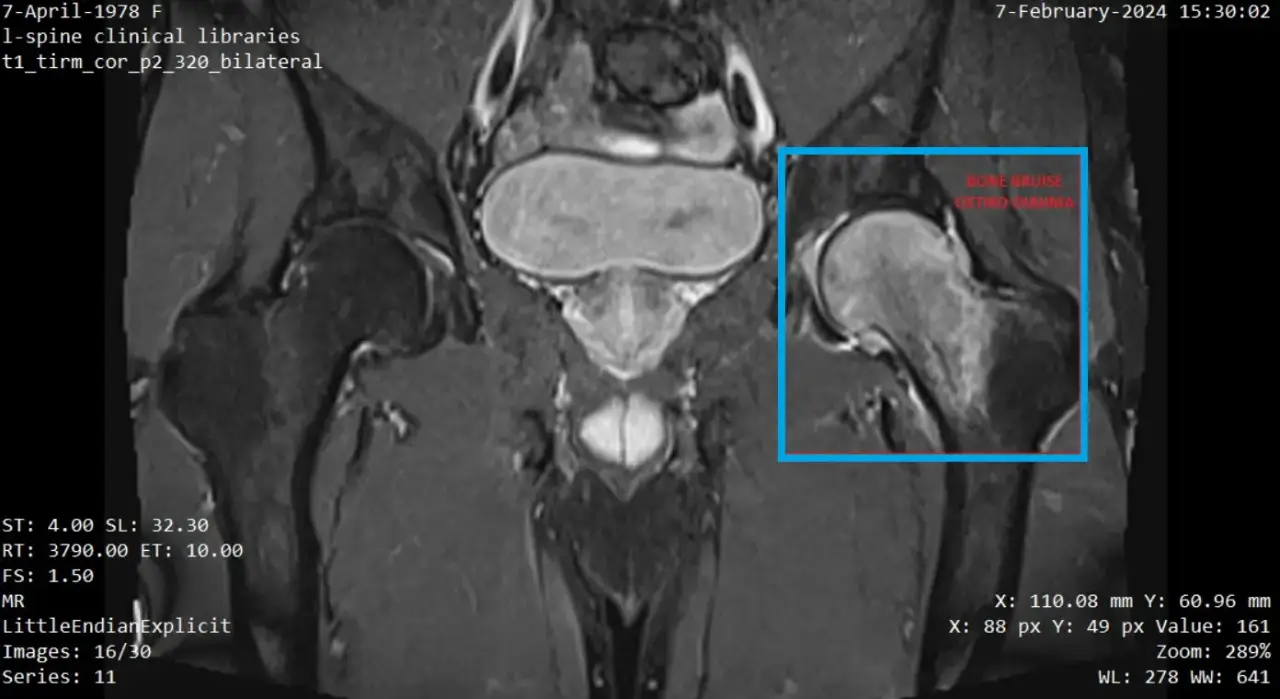Introduction
A bone bruise, also known as a bone contusion, is an injury where small blood vessels and the trabeculae within the bone are damaged. Unlike fractures, bone bruises don't break the bone completely, but they can cause significant pain and swelling. Effective management and rehabilitation are crucial for recovery. This article explores the mechanisms of injury leading to bone bruises, physiotherapy and rehabilitation strategies, and introduces the innovative diamagnetic pump technology.
Mechanisms of Injury Causing Bone Bruises
Bone bruises can result from a variety of trauma or stress-related incidents. Understanding these mechanisms is essential for accurate diagnosis and effective treatment. Common causes include:
1. Direct Impact: A sudden blow or impact to the bone, such as being hit by a hard object or falling directly onto a bony surface, can cause a bone bruise. This is common in contact sports like football, hockey, or during accidents.
2. Twisting Injuries: Rapid or forceful twisting of a joint can compress the bones against each other, leading to a bone bruise. This is frequently seen in sports like basketball or skiing where abrupt changes in direction are involved.
3. Overuse and Repetitive Stress: Continuous stress on a bone, particularly in weight-bearing activities, can cause microtrauma and bone bruising. This is typical in athletes who engage in running, jumping, or heavy lifting without adequate rest.
4. Compression Injuries: Situations where bones are pressed together, such as a knee hitting the dashboard in a car accident or heavy objects falling on limbs, can cause bruising within the bone.
5. Joint Dislocations and Sprains: When a joint is dislocated or severely sprained, the bones within the joint can be forced into each other, causing bruising. Ankle sprains or shoulder dislocations are common scenarios.
Physiotherapy for Bone Bruises
Physiotherapy plays a vital role in the recovery process of a bone bruise. The primary goals are to reduce pain, improve function, and prevent further injury. Here are some key strategies:
1. Rest and Protection: Initially, it is essential to rest the affected area to prevent further damage. This may involve using crutches for lower limb injuries or a brace for upper limb injuries.
2. Cryotherapy: Applying ice packs to the bruised area can help reduce pain and swelling. It's most effective when used for 15-20 minutes every 2-3 hours during the first 48 hours post-injury.
3. Compression and Elevation: Wrapping the injured area with an elastic bandage and elevating it above heart level can help minimize swelling.
4. Gradual Load Bearing: As the pain subsides, gradually reintroducing weight-bearing activities is crucial. This should be done under the guidance of a physiotherapist to ensure it's done safely.
5. Pain Management: Physiotherapists may use modalities like diamagnetic pump therapy, radiofrequency (TECAR), electrical stimulation, or TENS (Transcutaneous Electrical Nerve Stimulation) to manage pain.
6. Exercise Therapy: Tailored exercise programs focusing on range of motion, strengthening, and proprioception are vital. Exercises should start with low intensity and gradually progress as tolerated.
7. Manual Therapy: Techniques such as massage, mobilizations, and manipulations can help improve blood flow and reduce stiffness around the injured area.
8. Education: Educating patients about their condition, proper body mechanics, and injury prevention strategies is essential for long-term recovery and avoiding re-injury.
Rehabilitation Strategies
Rehabilitation for bone bruises involves a multi-phase approach:
1. Acute Phase (0-2 weeks): Focus on pain and swelling management. Use rest, ice, compression, and elevation (RICE) principles.
2. Subacute Phase (2-6 weeks): Gradually introduce range of motion exercises, light stretching, and low-impact activities like swimming or cycling.
3. Remodeling Phase (6-12 weeks): Emphasize strengthening exercises, weight-bearing activities, and proprioceptive training to restore function.
4. Functional Phase (3-6 months): Return to normal activities and sport-specific training while ensuring proper form and technique to prevent re-injury.
Diamagnetic Pump Technology
The diamagnetic pump is an innovative device used in the treatment of various musculoskeletal injuries, including bone bruises. This technology utilizes the principles of diamagnetism, where materials are repelled by magnetic fields.
1. Mechanism of Action: The diamagnetic pump generates a high-intensity, low-frequency magnetic field that creates a repulsive force on the tissues. This force helps in enhancing fluid dynamics within the injured area, promoting the removal of edema and increasing the delivery of nutrients and oxygen to the tissues.
2. Benefits for Bone Bruises:
- ➢ Pain Reduction: By improving circulation and reducing swelling, the diamagnetic pump can significantly alleviate pain.
- ➢ Faster Recovery: Enhanced fluid dynamics accelerate the healing process, potentially reducing the overall recovery time.
- ➢ Non-Invasive: The treatment is non-invasive and painless, making it an attractive option for patients seeking alternatives to more invasive procedures.
- ➢ Adjunct Therapy: It can be used alongside traditional physiotherapy and rehabilitation strategies for a comprehensive approach to treatment.
3. Clinical Application: Treatment sessions with the diamagnetic pump are typically short, lasting about 20-30 minutes. The number of sessions required depends on the severity of the bone bruise and the patient’s response to treatment.
Conclusion
Bone bruises, though less severe than fractures, require careful management to ensure full recovery. Physiotherapy and structured rehabilitation strategies play a crucial role in this process. Additionally, the introduction of the diamagnetic pump offers a promising adjunct therapy that can enhance traditional treatment methods, potentially leading to quicker and more efficient healing. Always consult with a healthcare professional to tailor a rehabilitation program to individual needs.
Πάντα να συμβουλεύεστε έναν επαγγελματία υγείας για την προσαρμογή ενός προγράμματος αποκατάστασης στις ατομικές σας ανάγκες.

